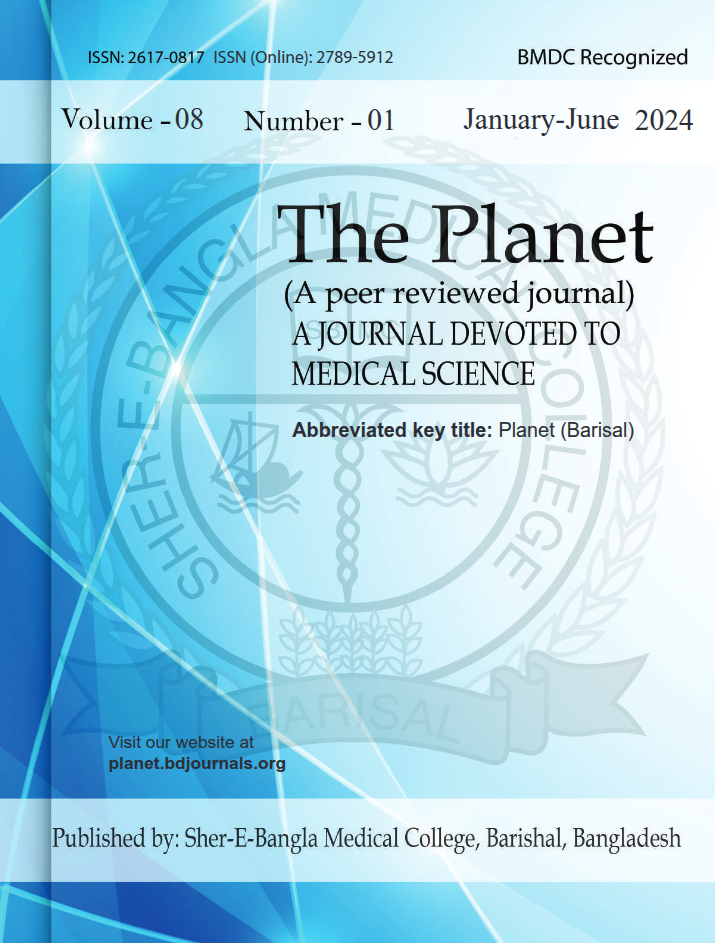Clinicopathological Features of Olfactory Neuroblastoma - A 10 Years Study from Tertiary Hospitals in Bangladesh
Published 07-07-2024
Keywords
- Olfactory neuroblastoma,
- Hyams grade,
- Kadish staging,
- Multimodal therapy,
- Survival outcomes
Copyright (c) 2024 The Planet

This work is licensed under a Creative Commons Attribution 4.0 International License.
How to Cite
Abstract
Background: Olfactory neuroblastoma (ONB) is a rare malignant neoplasm originating from the olfactory neuroepithelium. Due to its rarity, global epidemiological data are limited, especially from low- and middle-income countries (LMICs). This study aimed to describe the clinicopathological characteristics, treatment modalities, and prognostic factors of ONB patients treated at tertiary care hospitals in Bangladesh over a ten-year period. Methods & Materials: A retrospective cross-sectional study reviewed medical records of 400 histopathologically confirmed ONB patients from three tertiary hospitals in Bangladesh (2015–2024). Data collected included demographics, clinical presentation, Kadish staging, Hyams grading, treatment modalities, and survival outcomes. Statistical analysis included logistic regression and Cox proportional hazards regression to identify prognostic factors. Results: Predominantly affecting middle-aged adults (40–59 years, 45.5%) and males (59.5%), the majority of patients presented with nasal obstruction (85.0%) and epistaxis (72.0%). Most cases (70.5%) exhibited high-grade Hyams classification (III–IV) correlating strongly with advanced Kadish stages. Multimodal therapy (surgery plus radiotherapy with or without chemotherapy) was associated with the highest survival rates (>84%), whereas radiation alone and no definitive treatment significantly reduced survival (OR=0.33 and OR=0.22, respectively). Cox regression confirmed increased mortality risks for radiation-only (HR=2.12) and untreated patients (HR=3.02). Higher Hyams grades significantly correlated with worse prognosis (Grade III: OR=0.27; Grade IV: OR=0.14). Conclusions: ONB in Bangladesh mirrors global trends but demonstrates particular challenges related to delayed diagnosis and treatment access. Emphasis on early detection, standardized multidisciplinary treatment approaches, and rural healthcare improvements are essential for better outcomes.



